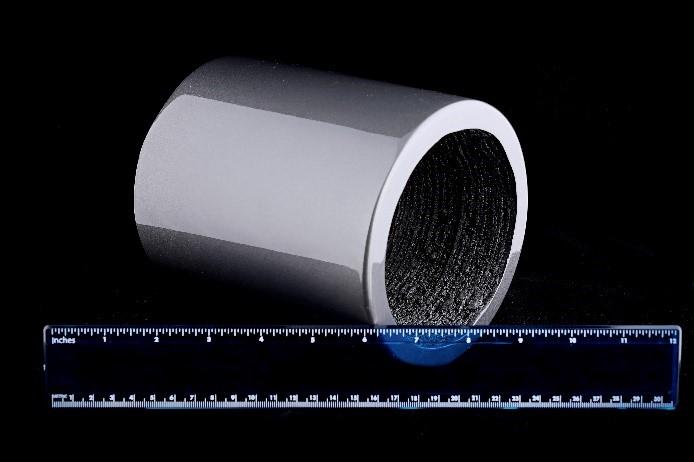By Samir Kagalwala – Power Magnetics Consultancy
‘Super’ has a magical impact on a mental screen, doesn’t it? Anytime we hear anything suffixed super – it instantly generates an image in mind of the thing being big, wonderful, superb, fantastic, marvelous, fabulous, excellent… you name an adjective.
However, a super sale in a super store of super duper merchandize might not be as super as the promoters try to make us believe. Haven’t we experienced a new release of a super movie from Hollywood that soon after release is playing to empty seats.
Do the ‘superconductors’ fail to live up to their name? Not really. They exhibit excellent qualitative characteristics that could ‘wow’ anyone on earth, let alone scientists. If you want to see the magic, literally magic-like realities that is — sit back and enjoy the demonstration below. If you do not say ‘wow’ I encourage you to write me to tell me why.
In world of physics, the superconductor means a conductor that is better, may be excellent, than a normal conductor. What’s so magical about it, so you ask? Well, its magic works in more than one way. One, it has a virtually zero electrical resistance resulting in electrons getting a free ride i.e. without obstacle of resistance and resulting energy loss thereof. Use of the zero resistance cables in transmitting the electricity from generating plants to end users, it is estimated, would save billions of dollars.
Second, it has a capacity to expel magnetic field under appropriate conditional surroundings. Its application could, and already is, to run an electric train with zero energy loss on frictionless rails made of magnets! Yes, that’s levitated train popularly known as MAGLEV.
Don’t you think these two applications and their implied advantages are worth naming such conductors ‘superconductors’?
The electrical resistance of a conductor varies with its temperature. In early 20th century researchers have known that certain materials exhibit superconducting properties when they approach near 0 K (Kelvin), i.e. at about -273°C temperature. At that cryogenic temperature its electrical resistance reaches to virtual zero. In a ring of such superconductor, the current once induced would flow in circle forever. The key, and the challenge, is to unbrokenly keep the conductor at that temperature. Granted, keeping it cool, along with its costly manufacturing process, is what makes it expensive to use at present in applications at large.
In late 20th century, certain ceramic materials were identified that showed superconducting characteristics at 77 K (-196°C) the temperature of liquid nitrogen. Call them high temperature superconductors (HTS). That breakthrough opened up the door for a possibility of using superconductors at the affordable cost.
After much hard work, persistence and team work, scientists at Oak Ridge National Lab (ORNL) in Oak Ridge, Tenn. have found a promising way to form a superconducting wire made of ceramic materials. In collaborative efforts with a cable manufacturer, efforts to produce superconductor wire in lengths are in progress.
Superconductors have undeniably made inroads into magnetic applications. In addition to MRI machines and magnetically levitated vehicles, it is already used in particle accelerators and sensors.
The next challenge is to develop a room temperature superconductor at affordable cost. That breakthrough would open a wide window of opportunities to use superconductors in many more applications. Emerging applications are transistors, circuitry connections, Josephson Junction devices, transducers, magnetic shielding, motors and generators, power transmission, transformers and inductors, and marine propulsion.
It is indeed a very interesting subject that has come far and has promising future. Like in any breakthrough scientific development, the proven concept takes long to shape into commercially feasible applications. I believe it has a bright future or to say in pun an ‘up lifting’ future!
To end with a lighter note, can you imagine a far-fetched application of you wearing a pair of shoes using superconductor and effortlessly float over to a nearby park (more likely shopping area!) with just a push? No friction and no loss of energy! Your pair of shoes never wearing out either!! Any con? Getting overweight might be one!
 About the Author
About the Author
Samir Kagalwala is a chief consultant at San Diego based Power Magnetics Consultancy (PMC). His keen ongoing interests in Magnetics and Magnetic Devices take him deep into covering from A to Z – Areas of scientific research to Zero defect production. Globally he presents papers, write articles, offer educational seminars and provide consulting services.
He has a unique combined experience in manufacturing and design of Wire Wound Components in Power Electronics. In over 30 plus years in the industry, he has set up magnetic manufacturing facilities globally, resolved short term and long term manufacturing issues meeting internal and external customer needs, bridged Design and Manufacturing for improved products. He has consistently satisfied customers with cost reduction and quality coils. He developed design rules and guidelines for manufacturing and helped increase manufacturing professionals’ understanding of the design criteria. He worked for Philips Electronics, Motorola and Zenith Electronics in various capacities.
He holds MBA from DePaul University, Chicago, B.S. in Electrical Engineering and B.S. in Mechanical Engineering.
For more information, contact Samir here.



